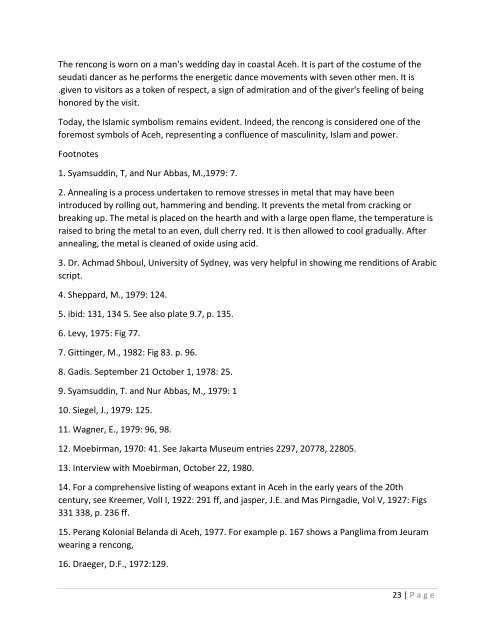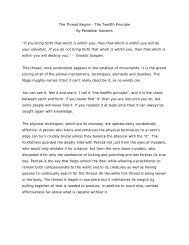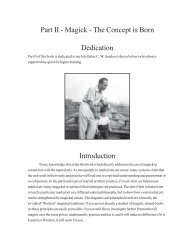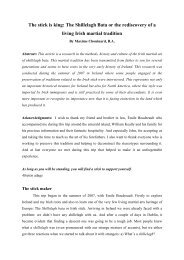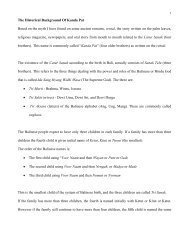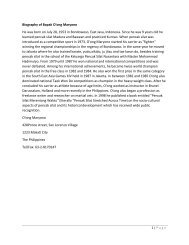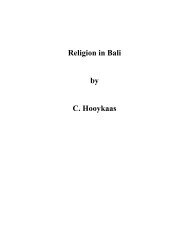The Myth of Maempo Cimande - Pukulan Cimande Pusaka
The Myth of Maempo Cimande - Pukulan Cimande Pusaka
The Myth of Maempo Cimande - Pukulan Cimande Pusaka
You also want an ePaper? Increase the reach of your titles
YUMPU automatically turns print PDFs into web optimized ePapers that Google loves.
<strong>The</strong> rencong is worn on a man's wedding day in coastal Aceh. It is part <strong>of</strong> the costume <strong>of</strong> the<br />
seudati dancer as he performs the energetic dance movements with seven other men. It is<br />
.given to visitors as a token <strong>of</strong> respect, a sign <strong>of</strong> admiration and <strong>of</strong> the giver's feeling <strong>of</strong> being<br />
honored by the visit.<br />
Today, the Islamic symbolism remains evident. Indeed, the rencong is considered one <strong>of</strong> the<br />
foremost symbols <strong>of</strong> Aceh, representing a confluence <strong>of</strong> masculinity, Islam and power.<br />
Footnotes<br />
1. Syamsuddin, T, and Nur Abbas, M.,1979: 7.<br />
2. Annealing is a process undertaken to remove stresses in metal that may have been<br />
introduced by rolling out, hammering and bending. It prevents the metal from cracking or<br />
breaking up. <strong>The</strong> metal is placed on the hearth and with a large open flame, the temperature is<br />
raised to bring the metal to an even, dull cherry red. It is then allowed to cool gradually. After<br />
annealing, the metal is cleaned <strong>of</strong> oxide using acid.<br />
3. Dr. Achmad Shboul, University <strong>of</strong> Sydney, was very helpful in showing me renditions <strong>of</strong> Arabic<br />
script.<br />
4. Sheppard, M., 1979: 124.<br />
5. ibid: 131, 134 5. See also plate 9.7, p. 135.<br />
6. Levy, 1975: Fig 77.<br />
7. Gittinger, M., 1982: Fig 83. p. 96.<br />
8. Gadis. September 21 October 1, 1978: 25.<br />
9. Syamsuddin, T. and Nur Abbas, M., 1979: 1<br />
10. Siegel, J., 1979: 125.<br />
11. Wagner, E., 1979: 96, 98.<br />
12. Moebirman, 1970: 41. See Jakarta Museum entries 2297, 20778, 22805.<br />
13. Interview with Moebirman, October 22, 1980.<br />
14. For a comprehensive listing <strong>of</strong> weapons extant in Aceh in the early years <strong>of</strong> the 20th<br />
century, see Kreemer, VolI I, 1922: 291 ff, and jasper, J.E. and Mas Pirngadie, Vol V, 1927: Figs<br />
331 338, p. 236 ff.<br />
15. Perang Kolonial Belanda di Aceh, 1977. For example p. 167 shows a Panglima from Jeuram<br />
wearing a rencong,<br />
16. Draeger, D.F., 1972:129.<br />
23 | P a g e


